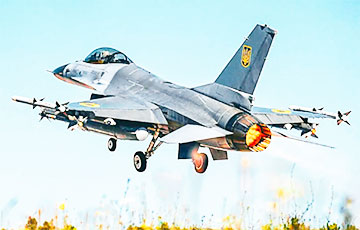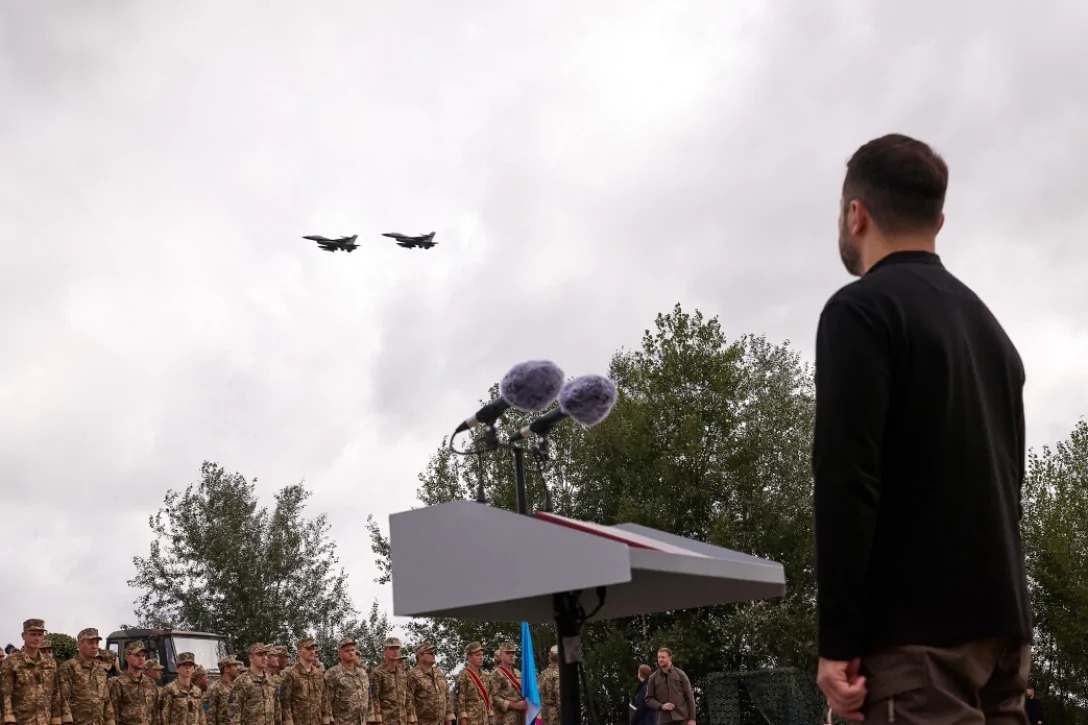Forbes: Ukraine’s F-16s Have Scored Their First Aerial Kills
15- 28.08.2024, 8:26
- 38,748

It became known what ensured success.
Ukraine’s ex-Danish Lockheed Martin F-16s have scored their first aerial victories. According to Ukrainian president Volodymyr Zelensky, the supersonic F-16s shot down Russian cruise missiles during the Russian air raids targeting Ukrainian cities on Monday. Forbes writes about this.
The shoot-downs came three weeks after the first of the nimble F-16s, out of around 85 that Belgium, Denmark, The Netherlands and Norway have pledged, arrived in Ukraine.
“It is excellent to see them in action,” wrote Joni Askola, a Finnish analyst.
How Ukraine uses F-16s
It was apparent early on that the Ukrainian air force would assign the F-16s to air-defense duty. They’ve been seen flying with pairs of AIM-9 infrared-guided air-to-air missiles and AIM-120 radar-guided air-to-air missiles. They haven’t been seen with air-to-ground ordnance, even though they are widely compatible with Ukraine’s best Western-made anti-radar missiles and GPS-guided glide bombs.
It makes sense for the F-16s to fly air-defense patrols. Ukraine is under relentless attack from the air—and its armed forces are mobilizing every available weapon to blunt the daily raids.

Monday’s early-morning attacks were the worst so far of Russia’s 29-month wider war on Ukraine. Hundreds of Russian ballistic and cruise missiles and explosive drones — fired by warships and heavy bombers and launchers on the ground — pummeled Kyiv and other cities, destroying wide swathes of Ukraine’s electrical grid and driving thousands of civilians into overnight shelters. Four people died.
The damage could’ve been worse. The Ukrainian air force and army claimed they shot down 102 missiles and 99 drones. Desperate to boost their air defenses, the Ukrainians have begun flying gun-armed helicopters on anti-drone patrols, bolstering an air-defense network that also includes long-range surface-to-air missile batteries, roving patrols of gun-armed trucks — and now the F-16s.
What are the F-16s transferred to Ukraine equipped with?
The upgraded, 1980s-vintage fighters are reasonably well-equipped for the role. The Ukrainian air force arms its 1980s-vintage F-16s with 1990s-vintage AIM-120Bs that range as far as 40 miles, guided by tiny radars in their noses. For closer fights, the F-16s carry AIM-9L/Ms — first introduced in the ’80s — that can hit targets several miles away by following their infrared signatures.
These aren’t the latest air-to-air missiles, but they’re reliable—and plentiful in the arsenals of Ukraine’s allies. The Ukrainian air force should have no problem keeping its F-16s fully armed even as more of the single-engine fighters arrive over the coming year.
The Ukrainian F-16s’ first sorties targeted Russian cruise missiles that can’t shoot back. As more of the fighters arrive and the Ukrainian air force expands their mission set, the F-16s may fly into battle against targets that can shoot back: Russian air force fighters and air-defense batteries.
“Once Ukraine acquires additional F-16 jets, more pilots, two Saab AEW planes, increased experience and more missiles, the jets will be utilized for purposes beyond just air defense,” Askola predicted, referring to the two Swedish-made Saab 340 airborne early warning radar aircraft Ukraine is set to receive.

Air force officials are preparing the jets for these dangerous clashes. To protect the F-16s from Russian missiles, Ukraine has retained the fighters’ recently-installed Pylon Integrated Dispensing System and the Electronic Combat Integrated Pylon Systems: PIDS and ECIPS, respectively.
PIDS ejects metal chaff and hot-burning flares to spoof incoming radar- and infrared-guided missiles. ECIPS houses passive defenses to complement the active chaff and flares, including the AN/ALQ-162 jammer for defeating radars on the ground, as well as an AN/AAR-60 missile warning system for triggering the passive defenses.
The jammer requires specific programming in order to recognize and defeat the latest Russian radars. The U.S. Air Force assisted with this programming, deploying airmen from the Florida-based 68th Electronic Warfare Squadron to Europe to tweak the F-16s’ jammers.
“Relying on data provided by Denmark and Norway, then adapting new processes and approaches to the usual process, the team was able to understand the system and start their work,” the squadron stated.
“One F-16 with a reprogrammed pod won’t achieve air dominance alone, but it may give you a pocket of air superiority for a moment’s time to achieve an objective that has strategic importance and impact,” a squadron official said.











